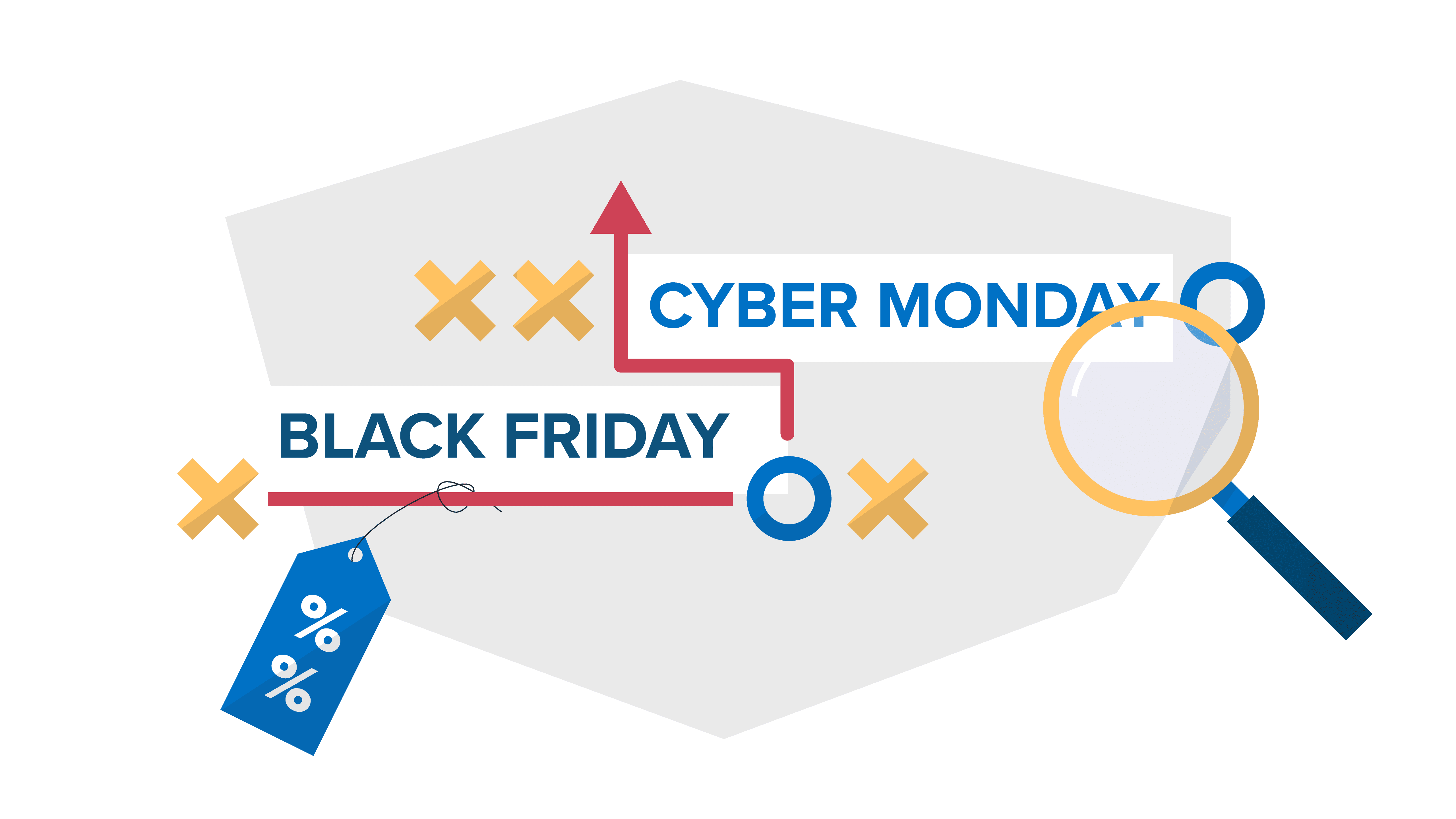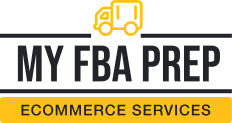
Issue 116: Reminder: It’s Time To Plan for BFCM

Hello, MyFBAPrep Sellers!
How well-prepared do you feel for Labor Day weekend? Now list out what you *wish* you had done, and apply it to your BFCM preparations.
In this newsletter we cover the latest advice for BFCM, how to improve ACoS on Amazon, and a guide to selling on Amazon from Alibaba.
BFCM Marketing Strategies: Black Friday and Cyber Monday Marketing Best Practices
Last year, merchants earned $9.8 billion in Black Friday sales, up 7.5% from the previous year. It’s not just Black Friday though — consumers also spent $12.4 billion on Cyber Monday. Some of our customers have even told us that they make a large percentage of their annual sales during BFCM alone.
In summary, you cannot miss the Black Friday weekend or Cyber Monday. You also need to develop a strategy and prepare your store well in advance to see the highest gains in profit margins. To help you ready your business for the upcoming craze, we’ve broken down the vital BFCM marketing tactics that capitalize on the sales season.
1) Optimize your eCommerce store with creative marketing tactics
- Persuade shoppers with exit intent pop-ups
- Engage customers with BFCM quizzes
- Provide multiple payment options
- Ensure fast check-outs
- Reward BFCM shoppers with bonus loyalty points
2) Host a BFCM week event
- Consider Black November
- Run contests
- Add live shopping
3) Leverage multiple channels for your BFCM marketing campaigns
- Give newsletter subscribers early access
- Diversify your sales channels
- Prep your influencer campaigns
- Run BFCM social media ads
4) Create a winning BFCM marketing email sequence
As part of your campaign, you may want to include the following types of communications:
- Pre-sale announcement
- Sneak peek of upcoming sales and offers
- Pre-sale reminder
- Black Friday event invitation
- Black Friday event reminders
- Announcement of when your Black Friday sale opens
- Black Friday exclusive coupon code
- Last chance for offers ending soon
- Thank you messages after the sale wraps up
Good segments to separate your audience into include:
- Existing customers (preferably by which products they bought)
- New customers, by which products they bought
- Marketplaces
P.S. Update your abandoned cart emails
5) Prepare your logistics
- Add inventory and fulfillment support
- Stock up on inventory across sales channels
- Pinpoint what worked well in the past and use it in you BFCM marketing strategy
For example, look at which products sold well, on which channels, where they sold, and which deals got the highest yield. Then, identify ways to offer deals that can save you money as well, such as:
- Products frequently sold together
- Product and accessory kits
- Multipacks
- Curated product bundles as part of influencer collaborations
- Sample or test bundles
If you can boost the size of the order while offering a deal, you boost revenue while reducing the cost of fulfillment (e.g., boxes, pick and pack), and increase the number of units sold at once.
6) Be aware of annual considerations
- Supply chain challenges
- Shipping timelines/cut-off times
Get the full checklist to prepare for BFCM.
What Is a Good ACoS on Amazon, and How Can We Improve It?
ACoS on Amazon represents the percentage of your sales spent on advertising and is an important metric for Amazon marketing. It’s calculated as follows:
ACoS = (Total Sales/Total Ad Spend) × 100
This metric is critical to understand the efficiency of your advertising campaigns. A lower ACoS on Amazon denotes a more economical campaign, while a higher number indicates your ad spend exceeds sales. Generally:
- 10%–20% ACoS: Considered excellent for most sellers. This range indicates high efficiency and profitability.
- 20%–30% ACoS: Still profitable but leaves room for optimization. Typical for competitive niches.
- 30%+ ACoS: May signal excessive ad spend. Consider optimizing your campaigns to reduce costs.
Several elements affect ACoS on Amazon:
- Product pricing: Higher-priced products can absorb more ad spend, leading to a lower ACoS.
- Competition: Highly competitive niches often require more significant ad spend, resulting in a higher ACoS.
- Ad placement: Strategic ad placements can improve click-through rate (CTR) and conversion rates, which impact ACoS.
- Keyword bidding: Effective keyword strategies and bidding can optimize ad spend and reduce ACoS.
- Seasonality: Seasonal fluctuations influence consumer behavior, ad performance, and, in turn, ACoS.
Learn how to improve your ACoS on Amazon.
MyFBAPrep Named to Inc. 5000 List for Second-Consecutive Year as One of America’s Fastest-growing Private Companies
“Being named to the Inc. 5000 list is an honor, but earning this distinction for two consecutive years puts us in an elite group that we are proud to join,” said Tom Wicky, Co-Founder and CEO of MyFBAPrep.
How to Sell on Amazon From Alibaba: A Complete Guide
Alibaba, the leading Chinese eCommerce platform, offers an extensive array of manufacturers and suppliers. It’s become an attractive platform for global sellers (especially those on Amazon) to source products and earn money with their private labels.
Although it’s not a straightforward process, many Amazon brands enjoy healthy profit margins buying from Alibaba and then selling through the FBA program.
However, it’s important to find a reliable supplier, ask for samples, negotiate prices, and utilize Amazon PPC to boost your sales.
For those curious about how to sell on Amazon from Alibaba effectively, this article is designed to address your questions and concerns.
Read on to learn about the Alibaba platform, including its benefits and risks, how to purchase and market Alibaba products on Amazon, and tips for fulfillment.
Get a step-by-step guide to selling on Amazon from Alibaba.
Top Industry News
Amazon Offers Sellers New Refund, Resale Options for Returned Items (Chain Store Age)
Amazon is expanding the ways third-party sellers can manage product returns. The company is now offering sellers that use its hosted Fulfillment by Amazon (FBA) service more options to manage returned inventory — including not requiring customers to return select items.
Amazon Aggregators Branded and Heyday Plan to Merge as Once-Booming Industry Continues to Shrink (CNBC)
Amazon aggregators Branded and Heyday plan to merge, CNBC has learned, as a segment of the e-commerce industry that boomed during the Covid era continues to consolidate. In a note to staffers on Monday, Heyday CEO Sebastian Rymarz said the combined companies will form a new entity called Essor, which translates to “take flight” in French, “capturing our vision of elevating brands to new heights through our platform,” he wrote. The new name will be officially rolled out in the coming days, and the combined companies are expected to generate annual revenue of $400 million.
Amazon’s Hosting Another Prime Day This October — What to Know About Prime Big Deal Days (NBC)
It’s official — Amazon’s October Prime Day sale, Prime Big Deal Days, is returning this fall. The retailer just announced that for the second time in 2024, it’s hosting a mega sale exclusive to Prime members, offering discounts on products across categories like tech, travel, home essentials, kitchen gadgets and beauty as many begin to think about holiday shopping.
Ecommerce is Now Part of the B2B Operating Standard (Digital Commerce 360)
The evidence continues to mount: Ecommerce is now standard operating procedure among B2B sellers both at home and abroad. In fact, a new DynamicWeb survey of 400 companies — each with more than 20 employees and revenues above $20 million — reveals that 70% of B2B sellers have an ecommerce site or an online portal.
5 Predictions for the 2024 Holiday Shopping Season (Practical Commerce)
In 2023, slightly more than half of U.S. online purchases from November 1 and December 25 came from mobile devices, accounting for approximately $113.5 billion, according to Adobe. This year, mobile will represent 54% of holiday ecommerce sales. Three factors drive the growth: age, marketplaces, and buy-now pay-later options.
Holiday eCommerce will Grow at the Fastest Rate Since 2021 (eMarketer)
Online sales will also accelerate to close out 2024. Holiday ecommerce sales will rise 9.5% YoY, a pace not seen in the past two years, and total online sales for November and December will reach $266.89 billion.
Until next time,
Rachel Andrea Go
Marketing Director, MyFBAPrep
